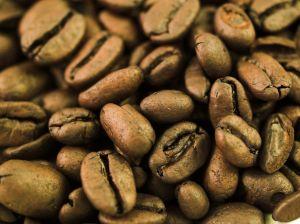The production of Espresso is a technical work, the technology of loading powder.
Production of Espresso: loading powder

Where to put the filter handle is a matter of opinion for the time being, let's see how to load the powder. Andre Yili has a short sentence of "7g", but in the eyes of some careful people, this stage can be described as "the most difficult step in the cooking Espresso process". The coffee powder compacted in the filter handle is often referred to as the "cake". For Espresso, how much water passes through the coffee cake per second is crucial, because Espresso's "golden law of flow rate" is: "whether it is a single or double dose, the extraction time is about 25 seconds." This can not only fully extract the fragrance of coffee, but also extract the least amount of caffeine and bad-smelling substances. The ground coffee powder has strong hygroscopicity. When the relative humidity of the surrounding environment is relatively high, it will absorb moisture; when the relative humidity of the surrounding environment is relatively low, it will release moisture. Therefore, the thickness of the mill and the amount of powder should be constantly adjusted to ensure a cooking time of 25 seconds.
The strength of cloth powder and pressing powder should also take into account environmental factors. The usual technical requirement is: after the powder is produced, the coffee powder in the handle is pushed evenly with a tamper. Press the powder smoothly once with a force of 5 pounds, then once with a force of 30 pounds, and then with a force of 20 pounds. At the same time, the powder press rotates 720 degrees. If the surrounding humidity is very heavy, the packing pressure will be tighter than before, in order to reduce the extraction rate. Making Espresso outdoors is a test for tough barists. due to frequent changes in outdoor temperature and humidity, truly dedicated baristas are said to adjust their powder pressing techniques in each cup of cooking to suit the climatic conditions on the spot.
It is also important to flatten the filter cake. If the resistance of the filter cake is uneven, it will be washed out of the hole or pore diameter by high-pressure boiling water, resulting in uneven extraction. If the extraction is insufficient, a yellowish-brown liquid will be formed in the cooking head, while the over-extracted part will dissolve other substances and cause white stripes. As for the strength of these "5 pounds" and "30 pounds", how can it be really plain? the real technocrats will only tell you to experience it. Don't trust the filling devices or pressure bars with standard counterweights in the grinder.
It is a matter of wisdom as to whether it is necessary to soften or compensate for a mineral, and technocrats generally prefer the "prepreg" function, which allows coffee powder to fill up with saturated water before starting the main extraction step. A coffee machine with a "pre-soak" function takes 5 to 8 seconds before coffee comes out after turning on the brewing switch. It is said that the reason why "prepreg" is considered important is that, first of all, it can reduce the adhesion of soluble aromatic oils in coffee, making it easier to extract more oil; secondly, it helps to close the top of the coffee filter cake and prevent high-pressure boiling water from rushing out of the cavities, causing uneven extraction.
Water temperature is of course important for the perfect Espresso. Under the ideal water temperature, the Espresso is very deep reddish brown, and the foam on the surface will have dark brown spots (the Italians call it "eltigre"), and the thickness of the foam should be more than 4mm; the water temperature is too low, the coffee is yellowish brown, although the foam is thick, but the color is relatively light, there are no dark spots. Too high water temperature will burn out the coffee grease, the aftertaste is restless, and there will be thick dark black stripes on the foam surface. For technocrats like Schumel, who are extremely sensitive to changes in water temperature, the brewing mouth of the coffee machine can never be trusted, burying the sensor probe directly in the filled coffee cake to monitor the water temperature.
Important Notice :
前街咖啡 FrontStreet Coffee has moved to new addredd:
FrontStreet Coffee Address: 315,Donghua East Road,GuangZhou
Tel:020 38364473
- Prev

The production of Espresso is a technical work, a grinding technology.
Espresso production: the size of ground coffee beans depends on the way they are cooked. Generally speaking, the longer the cooking time, the thicker the ground powder. In terms of actual cooking, American filter coffee takes a long time to make, so coffee powder is the thickest, siphon coffee takes more than a minute to cook, coffee powder is medium in size, and Espresso takes the shortest time.
- Next

The production of Espresso is the exquisite technical work of cups.
Espresso production: the cup should wait for the brewing mouth to steadily appear dark brown coffee liquid, but there is also a more perfect technical school will make more requirements for the cup. Needless to say, Andre Italian opened a chapter in "Espresso Coffee: a quality related to Chemistry" and made a special definition of the Espresso cup: the capacity does not exceed
Related
- Beginners will see the "Coffee pull flower" guide!
- What is the difference between ice blog purified milk and ordinary milk coffee?
- Why is the Philippines the largest producer of crops in Liberia?
- For coffee extraction, should the fine powder be retained?
- How does extracted espresso fill pressed powder? How much strength does it take to press the powder?
- How to make jasmine cold extract coffee? Is the jasmine + latte good?
- Will this little toy really make the coffee taste better? How does Lily Drip affect coffee extraction?
- Will the action of slapping the filter cup also affect coffee extraction?
- What's the difference between powder-to-water ratio and powder-to-liquid ratio?
- What is the Ethiopian local species? What does it have to do with Heirloom native species?

